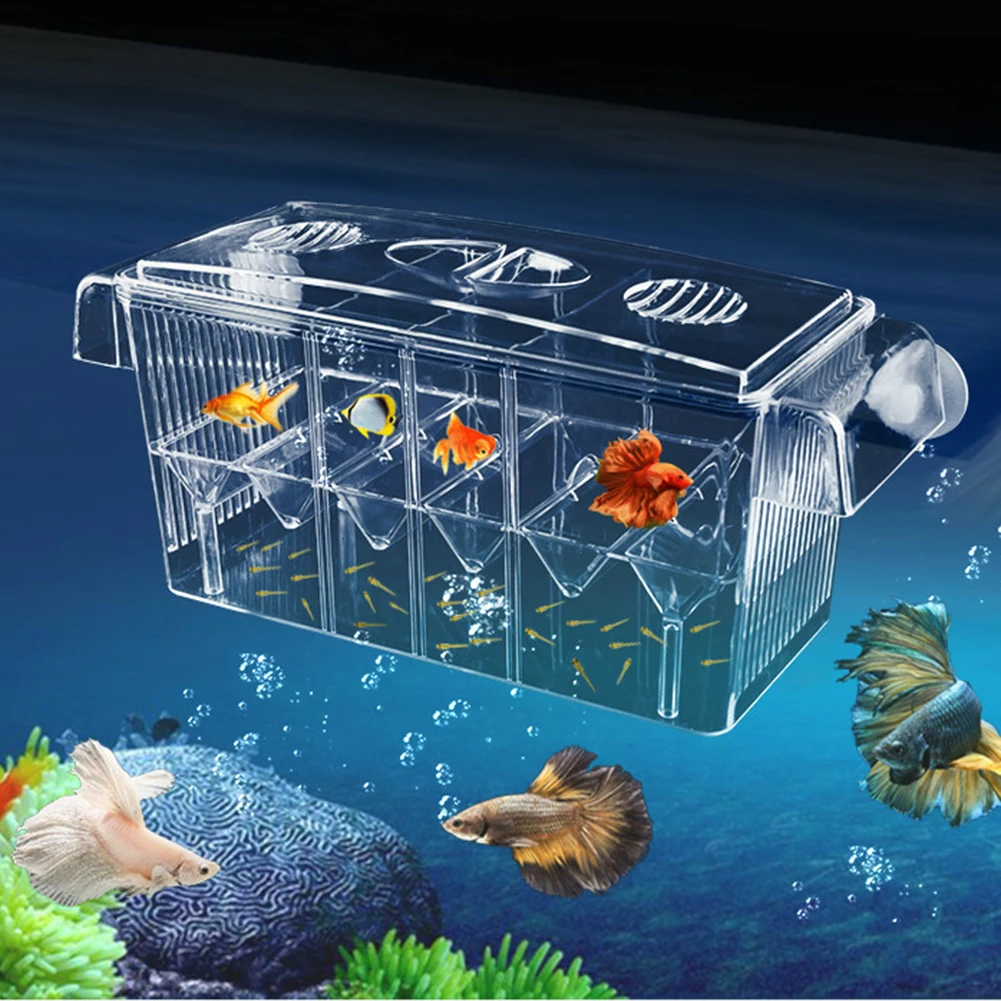Fish Breeding Tanks
Fish breeding tanks are becoming increasingly popular among aquarists and fish enthusiasts. These specialized tanks are designed to create a controlled environment that promotes optimal breeding conditions for fish. In this article, we will explore the benefits of fish breeding tanks, how they work, and some key considerations to keep in mind if you are considering investing in one.
Pain Points of Fish Breeding Tanks
Many fish owners struggle with the challenge of breeding their fish in a safe and controlled environment. Without a dedicated breeding tank, it can be difficult to ensure that the fish have the right conditions to successfully reproduce. This can lead to frustration and disappointment when attempts to breed are unsuccessful.
Target of Fish Breeding Tanks
Fish breeding tanks offer a solution to this challenge by providing a specifically designed environment for breeding. These tanks can help create the right conditions for successful breeding, including temperature control, water quality monitoring, and the creation of a safe space for young fry to grow.
Main Points of Fish Breeding Tanks
Fish breeding tanks are specialized tanks designed to facilitate successful fish breeding. They offer many benefits to fish owners, including creating a safe and controlled environment for breeding, ensuring optimal water quality, and providing a safe space for young fry to grow. There are a few key considerations to keep in mind when investing in a fish breeding tank, including tank size, filtration and temperature control, and appropriate breeding pairs.
The Target of Fish Breeding Tanks and Their Importance
Fish breeding tanks are designed to mimic the natural environment of your fish, ensuring the right conditions for successful breeding. They also help create a safe and controlled environment for breeding, allowing you to monitor and manage the conditions that lead to successful breeding.
Personally, I have found that using a fish breeding tank has improved my ability to successfully breed my fish. I have seen an increase in the number of successful breeding pairs and healthier fry, which has made me more confident in my ability to practice responsible fish breeding.
One of the most important considerations when using a fish breeding tank is to ensure that you have a reliable filtration system that is appropriate for the size of your tank. This will help ensure optimal water quality and prevent any harmful bacteria or toxins from being present in your tank.
Setting Up Fish Breeding Tanks
When setting up a fish breeding tank, it is important to consider a few key factors. These factors include tank size, filtration and temperature control, and appropriate breeding pairs. The tank should be sized appropriately for the species of fish you wish to breed, with enough space to allow for comfortable swimming and growth.
Water quality is another important consideration, and investing in a reliable filtration system is essential to ensuring optimal water conditions for breeding. Temperature control is also important, and using a heater or chiller can help regulate the temperature and create the ideal breeding conditions for your fish.
Finally, when selecting breeding pairs, it is important to choose individuals that are healthy and compatible. Breeding pairs should have similar sizes, temperaments, and genetic backgrounds to ensure a successful breeding outcome.
FAQs About Fish Breeding Tanks
1. What kind of fish are best for breeding tanks?
There are many species of fish that are suitable for breeding in tanks, including guppies, bettas, and cichlids. It is important to research the specific requirements and behaviors of your chosen species before attempting breeding.
2. Can fish breeding tanks help prevent aggression among fish?
Fish breeding tanks can help reduce aggression among fish by providing a separate space for breeding pairs. However, it is important to ensure that appropriate breeding pairs are selected to avoid conflicts and aggressive behavior.
3. Can I still use a fish breeding tank if I only have one fish?
While fish breeding tanks are designed for breeding pairs, they can still be used for single fish if adequate space and conditions are provided. However, it is important to note that breeding may not occur in this case.
4. Are fish breeding tanks expensive to maintain?
The cost of maintaining a fish breeding tank can vary depending on the size of the tank, the species of fish being bred, and the equipment needed. However, with proper care and maintenance, the cost can be relatively low compared to the benefits of successful breeding.
Conclusion of Fish Breeding Tanks
Fish breeding tanks offer an excellent solution for those looking to breed fish in a safe and controlled environment. By providing the optimal conditions for breeding and creating a safe space for young fry to grow, fish breeding tanks can help ensure a successful breeding outcome and healthy fish offspring. Investing in a reliable filtration system, selecting appropriate breeding pairs, and monitoring water temperature and quality are all essential considerations when setting up a fish breeding tank.
Gallery
A Group Of Small Fish Breeding Ponds (tanks) In Indonesia | Fish

Photo Credit by: bing.com / breeding ponds tanks
Aliexpress.com : Buy Multifunctional Fish Breeding Isolation Box

Photo Credit by: bing.com / aquarium breeder guppy incubator guppies hatchery peces separator hatching peceras huevos pecera hidom grass dwarf planaria agresivos venta bx acclimation
Discus Breeding Setup Fish Tank Setup And Equipment | In Kilsyth
Photo Credit by: bing.com / breeding discus fish setup tank tanks aquarium room equipment clownfish cubes
Fish Breeding Tank .fisk Ræktunar Rekki. - YouTube
Photo Credit by: bing.com / breeding fish tank tanks aquarium setup multiple racks set coral breed water room system clownfish aquariums tropical store
2018 New Arrival Transparent Aquarium Floating Breeding Box Guppy Betta

Photo Credit by: bing.com / guppy betta hatchery isolation elevage poissons breeder zucht inkubator pecera couveuse incubator boîte peceras incubateur fisch hatching fixation reservoir aquariums
